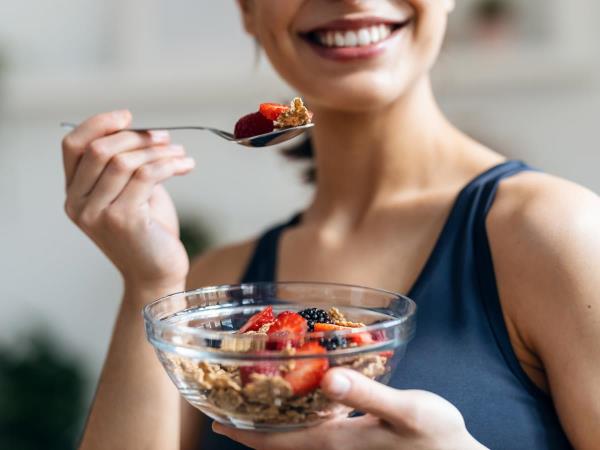What exactly are dietary fibers – and why do we love them so much?
If you have ever listened to your grandmother while she was cooking barley with turnips and saying that you need to purify yourself, then you know that traditional medicine has long known what scientists are now confirming. Dietary fibers are parts of plants that our bodies do not digest – and that's indeed a good thing! Just like a broom sweeping through our intestines, they clean residues, help regulate sugar, and even lower cholesterol.
Therefore, it's no wonder that in recent decades we have classified them as key allies of health. They help in weight management, support intestinal flora (those tiny bacteria you have in your gut that are essential) and contribute to a feeling of fullness, which means fewer chances of indulging in that chocolate staring at us from the cupboard.
According to the World Health Organization (WHO), people who consume more fiber on average live longer and have a lower incidence of colorectal cancer, type 2 diabetes, and cardiovascular diseases. A study from 2019, published in The Lancet journal, showed that consuming more than 25–29 grams of fiber per day may reduce the risk of these diseases by 15 to 30%.
Fiber is not just one kind
When we talk about fibers, we need to distinguish between two types – soluble and insoluble fibers. The names may sound like from school chemistry, but the difference is actually simple:
Soluble fibers dissolve in water and form a gel, which slows down digestion. This means that nutrients are absorbed more slowly – great for blood sugar! They can be found in oats, apples, peas, beans, and citrus fruits.
Insoluble fibers, on the other hand, act as a rough broom – they do not dissolve but travel through our bodies and mechanically clean the intestines. You can find them in bran, whole-grain bread, nuts, cauliflower, and potato skins.
The difference is important because each type has its own role – like in medicinal herbs, where chamomile soothes, mint aids digestion, and St. John's wort lifts the spirits.
How much fiber should we consume per day?
Our great-grandmothers ate a lot of beans, lentils, cabbage, apples, and homemade rye bread – and without knowing it precisely, they were consuming just the right amount of fibers. Today, however, we often fluctuate – some barely consume 10 grams per day, while others overdo it with various superfoods, fiber supplements, and instant porridges.
According to the Academy of Nutrition and Dietetics, adults should consume daily:
- 25 grams of fiber for adult women,
- 38 grams of fiber for adult men,
- slightly less (around 21–30 g), as we age,
- at least 28 grams for pregnant women.
But be cautious – consuming more than 70 grams of fiber per day can do more harm than good. It's like drinking ten nettle teas every day – the body simply can't handle it.
What happens if we overdo it?
Just like too much garlic can irritate the stomach, excessive fiber intake can cause some inconveniences. Symptoms of excessive fiber intake include:
- bloating and flatulence (gas),
- constant feeling of fullness and heaviness in the abdomen,
- stomach cramps,
- constipation or even diarrhea,
- deficiency of essential nutrients, as fibers bind minerals such as calcium, magnesium, zinc, and iron,
- feeling of nausea and sometimes even weight loss.
In rare cases, there can be narrowing of the intestines – something doctors have noticed in people who excessively consumed fiber supplements without adequate water intake.
A study from 2012, published in the World Journal of Gastroenterology, followed 63 individuals with bloating, abdominal pain, and constipation. It was shown that the condition significantly improved in those who reduced the fiber intake – and not the other way around!
When do fibers help – and when do they not?
It is worth noting that fibers are not harmful. On the contrary! For people suffering from constipation, they can be a lifesaver. But as with all natural remedies, it is essential to know how much, when, and how.
In the case of Irritable Bowel Syndrome (IBS), which affects an estimated 10 to 15% of people, fibers should be handled smartly. While soluble fiber might benefit some, it could worsen the condition for others.
Which foods have the most fibers – and which are safe for a sensitive stomach?
Here are some examples of fiber amounts in everyday foods (per 1 cup, which is approximately 240 ml):
- Raspberries – 8 g of fiber,
- Apple (medium-sized) – 4.5 g,
- Cooked peas – 9 g,
- Cooked broccoli – 5 g,
- Whole-grain spaghetti – 6 g,
- Quinoa – 5 g.
So, if you were to have oatmeal with raspberries for breakfast, whole-grain pasta for lunch, and bean stew for dinner, you could quickly reach 40 grams or even more of fiber daily – which might be too much if you're not used to it.
What to do if excessive fiber causes bloating?
Here, we advise an old but effective trick from traditional medicine: start slowly and with water. If you start consuming more fiber, do it gradually – and make sure to drink enough fluids. Fibers without fluids are like dry sponges – they only swell up in your stomach.
Additionally, the following can help:
- light walk after meals, as movement stimulates peristalsis (intestinal movement),
- warm herbal teas, such as mint and fennel (fennel also reduces gas),
- avoiding carbonated drinks, chewing gum, and overeating.
If the issues persist, in folk practice, it is advised to eat light foods for a few days, such as boiled rice, rusks, bananas, and unsweetened compotes. Such a diet usually contains only around 10 grams of fiber per day, which is enough for the intestines to rest.
How to find the right balance?
Nature teaches us balance. Fibers are excellent – but too much of a good thing can turn bad. It is crucial to listen to your body and avoid extremes. If you are on the path to a healthier diet, start slowly and sensibly. Let each bite be a help, not a burden.
And finally, the next time you prepare whole-grain porridge, add an apple, sprinkle with cinnamon, and enjoy it slowly. Your intestines will thank you ...










 Would you like to be informed about news on the website?
Would you like to be informed about news on the website?

